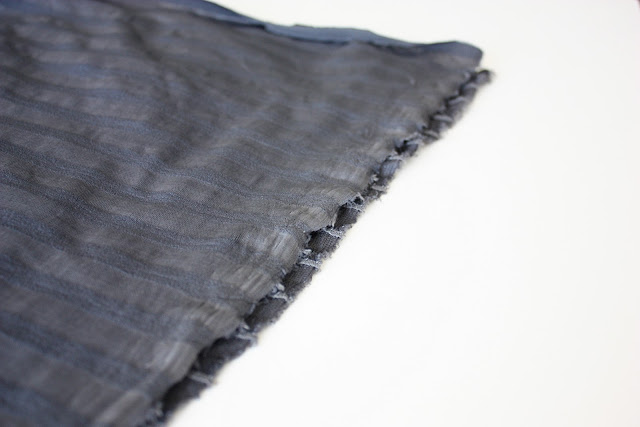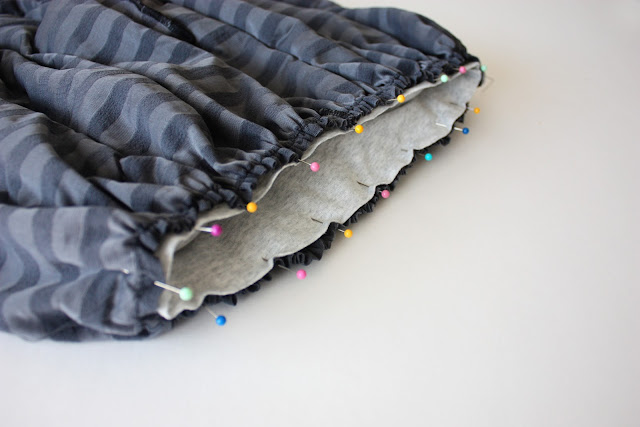**Keep in mind, you will now be making the pleats with both pieces of fabric together, as if they are one piece. So keep the two pieces lined up and pressed together...........and make the pleats as explained below.
Thursday, January 27, 2011
pleated knit scarf
**Keep in mind, you will now be making the pleats with both pieces of fabric together, as if they are one piece. So keep the two pieces lined up and pressed together...........and make the pleats as explained below.
Posted by JReneeMiles at 7:45 PM 0 comments
Tshirt ruffled Dress from Makeit - Love it

Posted by JReneeMiles at 11:36 AM 0 comments
Wednesday, January 26, 2011
pizza bites http://foodfolksandfun.blogspot.com/
Pizza Bites
4 oz. mozzarella cheese, cubed (about 20-24 pieces)
Sliced pepperoni
For topping:
Olive oil
Italian seasoning
Grated Parmesan cheese
Pizza sauce for dipping
Lightly brush the tops of the dough balls with olive oil. Sprinkle with Italian seasoning and grated Parmesan cheese. Bake for 20 minutes, or until the tops are golden brown. Serve warm, with dipping sauce as desired.
Posted by JReneeMiles at 12:46 PM 0 comments
microwave-mug chocolate cake
http://www.auntpegsrecipebox.blogspot.com/
Microwave Chocolate Cake in a Mug
These were a hit with everyone who purchased them, and we have had a lot of requests for the recipe since...
It really makes an excellent cake (enough for 2 people) in the microwave in 3 minutes. No Kidding!
 |
| photo of the cake baking in the microwave |

Posted by JReneeMiles at 12:45 PM 0 comments
Tuesday, January 25, 2011
http://www.purlbee.com/little-boys-tie/
 This little boy's Easter tie is quick but very well made and will brighten any Easter outfit. The tie is sewn almost entirely by hand, so if you don't have a machine its easy to finish without one.
This little boy's Easter tie is quick but very well made and will brighten any Easter outfit. The tie is sewn almost entirely by hand, so if you don't have a machine its easy to finish without one.
Materials

- 3/4-yard Liberty of London Tana Lawn in Blue Cars
- 1/4-yard Moda Muslin in White
- 1/4-yard Sew in Stabilizer
- 1 spool of 100% cotton thread in a color that compliments your fabric
- Hand sewing needle
- Print, cut and tape together Little Boy's Tie Templates, available here
Cut Front and Back Tie
Cut the 27-inch x 54-inch piece of Tana Lawn in half length-wise to create two 27-inch squares.

Take one of these squares and fold it in half diagonally as shown above and press it. This diagonal line is the bias fold.

Place your Front Tie template piece along the diagonal fold where indicated on the template and pin. Make sure that the fabric print is oriented in the correct way, it is hard to tell from this picture but the cars are right side up.

Cut out the Front Tie piece.
Cut Front Tie Lining and Back Tie Lining
Using the second 27-inch Tana Lawn square cut out the Back Tie in the same manner as above, along the bias fold.

Cut a 9-inch square of Muslin, fold it in half diagonally and press it. Place both the Front Tie Lining and the Back Tie Lining templates on the muslin, being sure to place the correct edge of the template along the fold as indicated on the template.
Cut Front Tie Interfacing and Back Tie Interfacing
From the Sew in Stabilizer interfacing, cut the Front Tie Interface and the Back Tie Interface pieces. Because the stabilizer is not woven you don't need to worry about cutting it on the bias.

Prepare to Sew Tie
Open up your pieces, you will have:
- 1 Front Tie Piece
- 1 Back Tie Piece
- 1 Front Tie Lining
- 1 Back Tie Lining
- 1 Front Tie Interfacing
- 1 Back Tie Interfacing
Do not iron these pieces flat. You will need their middle markings for reference later.
Front and Back Lining

From the Front Tie Lining, fold the bottom tip up 1/4-inch and press it.

Fold the bottom sides of the lining in 1/4-inch each and press them into place. This will form a neat point at the bottom angle of the lining.
Repeat this step for the Back Lining.

Fold the bottom edges of the Front tie in 1/4 and press them into place.

Fold the tip up 1/4-inch press it, and then fold in the sides to a neat point and press it again, as you did above with the lining pieces.
Repeat this step for the Back Tie.

Place the Front Lining on top of the Front Tie end, wrong sides together. Make sure that the lining is contained within the borders of the end of the tie as shown above. It should be a little bit smaller than the tie end.

Pin the Lining in place

Sew the folded edges of the lining onto the tie end with a slip stitch. Sew only through the folded layer of the Tana Lawn- Do not sew though to the front of the tie. This is very similar to sewing on the binding of a quilt.
Please click here if you need a more in depth explanation of slip stitch.

It's not necessary to sew the top of the lining, it will get enclosed within in the shaping of the tie.
Repeat the same steps to sew on the Back Lining.
Sew the Halves Together

Place the square end of the Back Tie piece on top of and perpendicular to the square end of the Front Tie piece, right sides together, to form a right angle as shown above. Do the same for the interfacing pieces. Draw a diagonal line from right to left across this intersection, as pictured above in yellow. This will be your seam line.

Sew the fronts and backs together along the seam line.
Trim off the excess fabric to 1/4-inch.

Press the seam open. It will be practically invisible on the right side since the print has so much going on!
Shaping the Tie

Fold in edges of the long sides 1/4-inch and press into place.

Fold again 1/4-inch and press.

Fold both edges in so they meet at the crease in the center of the tie and press.

Open up the sides and slip your interfacing in as pictured above. It should fit snugly inside the tie.

Now it's time to close up the tie. Refold the edges, press them again and pin into place.
Sew Tie

The inside seam of your tie will be sewn by hand.
Please Note: I used red thread for the following steps, but only so the technique would be more visible. At home you should use thread that matches your fabric.
Tack the point where the two edges meet a few times before you start your seam.

The tie is sewn up with a different type of slip stitch than was used for sewing the lining:
- Start from the tack run your needle through the fold on the left side and come out about 1/2-inch above.
- Insert your needle directly across from where you came out into the right side and slide it up though the fold for a 1/2-inch.
- Then enter the left side directly across from where you exited the right side.
- Repeat
Once you do this a few times you will have a little ladder of stitches as shown above.

- Pull the stitches taut and they will almost disappear.

- When you get to the end of your length of thread take a couple of tacking stitches but this time sew though the interfacing as well, while making sure not to sew though to the front of the tie, which will hold the interfacing in place.
Sew the entire inside seam of the tie in this way.
Once you're done, press the tie thoroughly to get rid of the middle seam and you'll be finished! Enjoy! --Molly

Posted by JReneeMiles at 8:01 PM 0 comments


























































